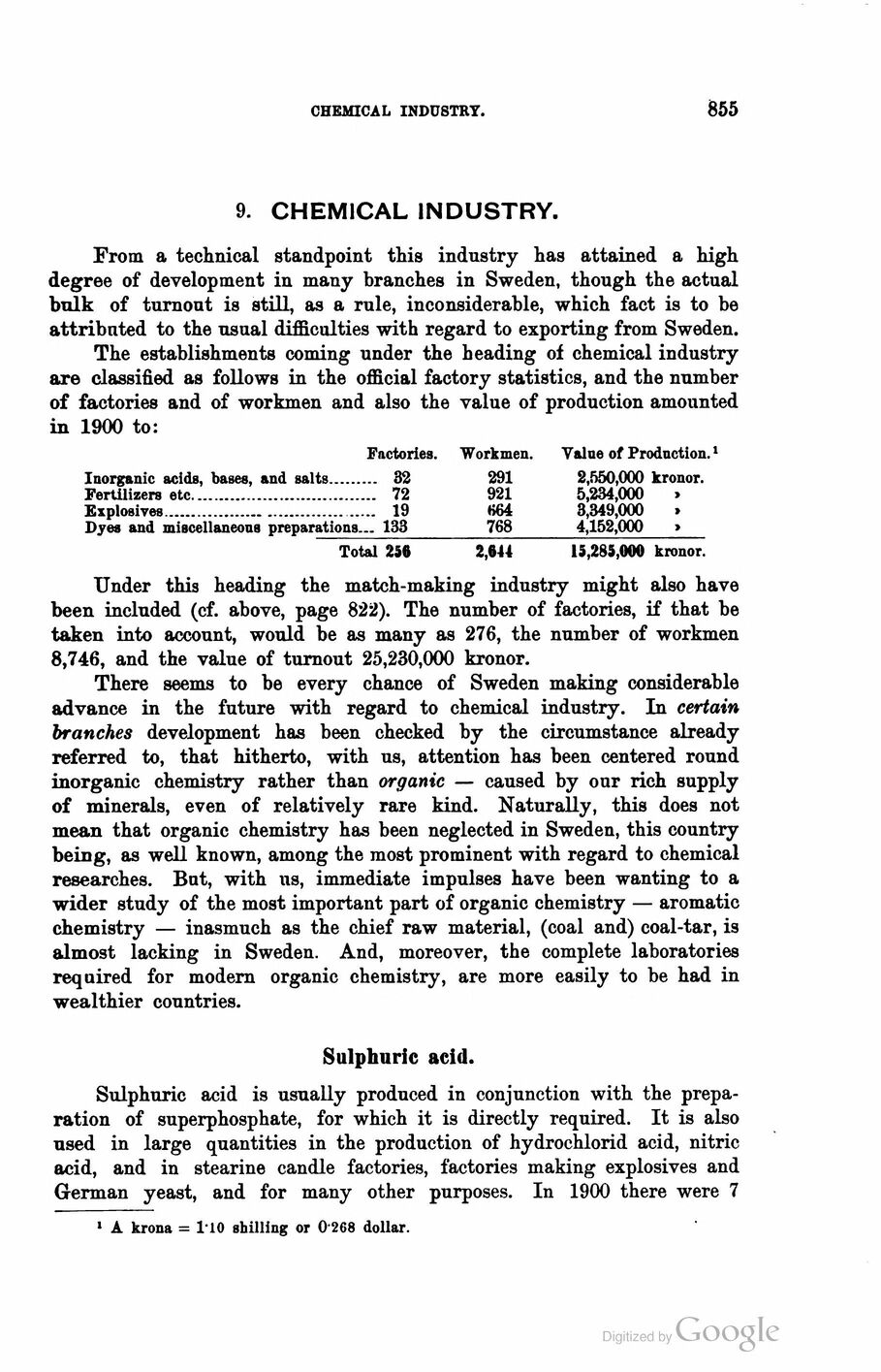
Full resolution (JPEG) - On this page / på denna sida - Second part - X. Manufacturing Industries. By Å. G. Ekstrand, Ph. D., Chief Engineer, Control Office of the Department of Finance - 9. Chemical Industry - Sulphuric acid

<< prev. page << föreg. sida << >> nästa sida >> next page >>
Below is the raw OCR text
from the above scanned image.
Do you see an error? Proofread the page now!
Här nedan syns maskintolkade texten från faksimilbilden ovan.
Ser du något fel? Korrekturläs sidan nu!
This page has never been proofread. / Denna sida har aldrig korrekturlästs.
chemical industry.
855
9. CHEMICAL INDUSTRY.
From a technical standpoint this industry has attained a high
degree of development in many branches in Sweden, though the actual
bulk of turnout is still, as a rule, inconsiderable, which fact is to be
attributed to the usual difficulties with regard to exporting from Sweden.
The establishments coming under the heading of chemical industry
are classified as follows in the official factory statistics, and the number
of factories and of workmen and also the value of production amounted
in 1900 to:
Factories. Workmen. Value of Production.1
Inorganic acids, bases, and salts......... 32 291 2,550,000 kronor.
Fertilizers etc.................................. 72 921 5,234,000 >
Explosives...................................... 19 864 3,349,000 »
Dyes and miscellaneous preparations— 133_768_4,152,000 »
Total 256 2,644 15,285,000 kronor.
Under this heading the match-making industry might also have
been included (cf. above, page 822). The number of factories, if that be
taken into account, would be as many as 276, the number of workmen
8,746, and the value of turnout 25,230,000 kronor.
There seems to be every chance of Sweden making considerable
advance in the future with regard to chemical industry. In certain
branches development has been checked by the circumstance already
referred to, that hitherto, with us, attention has been centered round
inorganic chemistry rather than organic — caused by our rich supply
of minerals, even of relatively rare kind. Naturally, this does not
mean that organic chemistry has been neglected in Sweden, this country
being, as well known, among the most prominent with regard to chemical
researches. But, with us, immediate impulses have been wanting to a
wider study of the most important part of organic chemistry — aromatic
chemistry — inasmuch as the chief raw material, (coal and) coal-tar, is
almost lacking in Sweden. And, moreover, the complete laboratories
required for modern organic chemistry, are more easily to be had in
wealthier countries.
Sulphuric acid.
Sulphuric acid is usually produced in conjunction with the
preparation of superphosphate, for which it is directly required. It is also
used in large quantities in the production of hydrochlorid acid, nitric
acid, and in stearine candle factories, factories making explosives and
G-erman yeast, and for many other purposes. In 1900 there were 7
1 A krona = 110 shilling or 0 268 dollar.
<< prev. page << föreg. sida << >> nästa sida >> next page >>